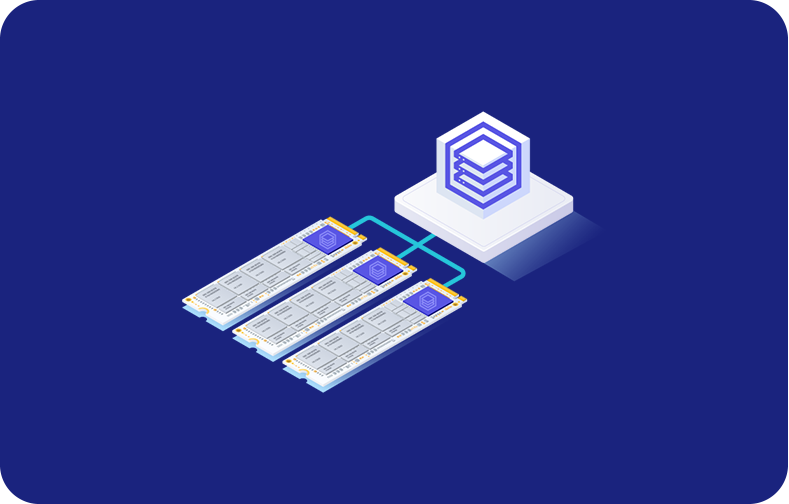High Availability and Fault Tolerance with Memcached Deployment Best Practices

However, if you are willing to access Memcache through PHP, the Memcached module is the only mode for smooth access.
-
- High Availability and Fault Tolerance of Memcached Server
- Critical Challenges in Achieving High Availability and Fault Tolerance
- Impact of Failures on Memcached Deployment
- Designing for High Availability and Fault Tolerance
- Security Considerations
- VPSserver - The Best
- Future Trends and Emerging Technologies
High Availability and Fault Tolerance of Memcached Server
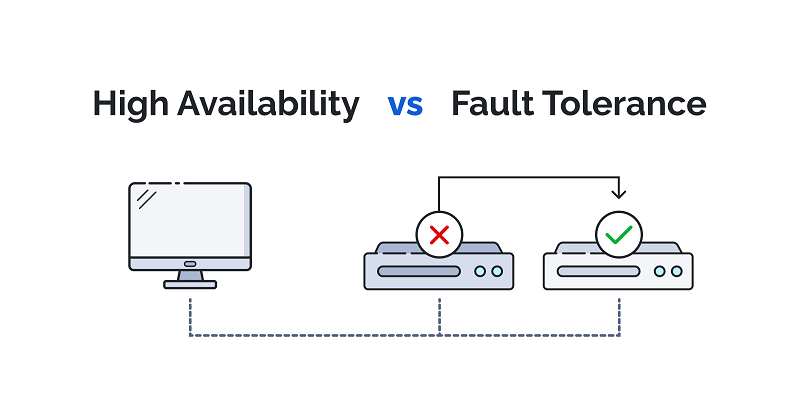
In distributed systems like Memcached, failure tolerance (FT) and high availability (HA) provide service continuity. Redundancy and failover strategies can give a system high availability (HA), allowing users to use it.
FT refers to the capacity of a system to keep running in the event of a software or hardware breakdown. Maintaining system reliability and performance is the goal of HA and FT techniques in Memcached deployment, which seek to reduce downtime and data loss.
Critical Challenges in Achieving High Availability and Fault Tolerance

Executing high availability and fault tolerance in a Memcached deployment is not without its limitations.
Among these difficulties are:
Keeping data consistent and up-to-date among dispersed nodes while minimizing delays and errors.
Effortlessly overseeing failover procedures to ensure a smooth transfer of operations to backup nodes in the event of primary node failure.
Keeping numerous copies of data might raise resource overhead; therefore, it's important to balance redundancy with performance.
To avoid problems with outdated data, it is essential to synchronize cache invalidation and updates among dispersed nodes.
Setting up reliable alerting and monitoring systems to quickly identify faults and start recovery procedures.
Impact of Failures on Memcached Deployment
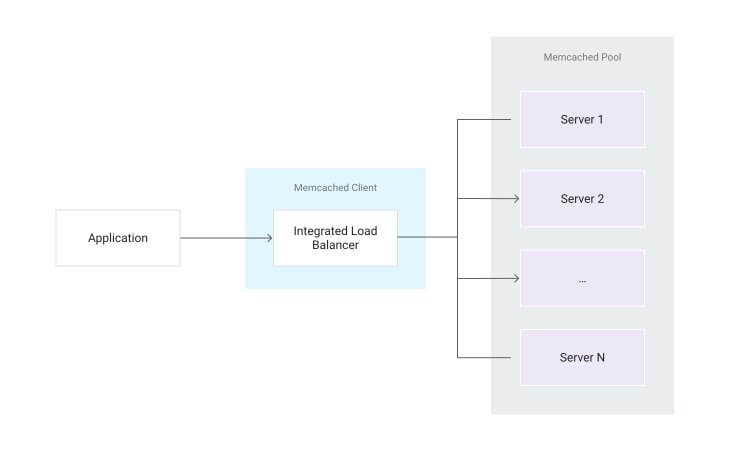
There are severe consequences for system performance and data integrity if the Memcached deployment fails. Some of the consequences of mistakes are:
Data Loss: Data loss due to insufficient backup or replication processes could undermine the trustworthiness of cached data.
Inconsistency: If data consistency is not maintained correctly across dispersed nodes, users may receive outdated or inconsistent data, which can cause applications to behave incorrectly and corrupt data.
Performance Degradation: Failures can decrease throughput and latency during failover events or when the system is under stress.
Downtime: Users may get unhappy when services are interrupted due to unexpected issues caused by problems.
Designing for High Availability and Fault Tolerance
Interspersing redundancy and duplication mechanisms while creating fault tolerance (FT) and high availability (HA) in Memcached performance is essential. Keeping numerous Memcached servers up is an example of redundancy, which helps make systems more resilient in the face of problems.
Distributing the load across multiple Memcached instances installed on different real or virtual servers can significantly reduce database load and improve performance. To avoid data loss and increase availability, replication options include duplicating cached data across numerous Memcached servers.
Memcached ensures that data remains accessible in the event of server failures by distributing copies of frequently requested data across multiple servers.
Using the new Memcached technique, users can access HTML pages and improve overall performance.
Load Balancing Techniques
The implementation of load-balancing strategies is essential for improving resource consumption and guaranteeing a uniform workload distribution among Memcached servers.
Using methods like round-robin or least connections, a load balancer must be used to distribute incoming database queries or API calls evenly among several Memcached servers.
By spreading the work out evenly and keeping individual Memcached servers from getting too busy, load-balancing methods are very important for keeping the system running at its best.
Failover Mechanisms
Failover mechanisms are crucial when implementing HA and FT methods with Memcached. When a server goes down, failover mechanisms immediately begin rerouting requests to other, more robust Memcached instances.
Methods like connection pooling and monitoring make this possible by swiftly identifying and redirecting downed connections to other servers. With the help of failover methods that guarantee fast recovery from failures, keep services available uninterrupted and lessen the blow of Memcached server outages.
Data Partitioning and Distribution
The design of a scalable and fault-tolerant Memcached deployment must consider data segmentation and distribution. Data partitioning entails dispersing the cached data across numerous Memcached servers in smaller portions.
A predetermined hash function maps each key to a unique Memcached instance, allowing for consistent hashing algorithms to accomplish this.
Data partitioning optimizes resource utilization by dividing data uniformly across servers, which helps prevent hotspots.
Server capacity, network latency, and data access patterns are additional aspects that should be considered in data distribution schemes for optimal performance and reliability.
Security Considerations
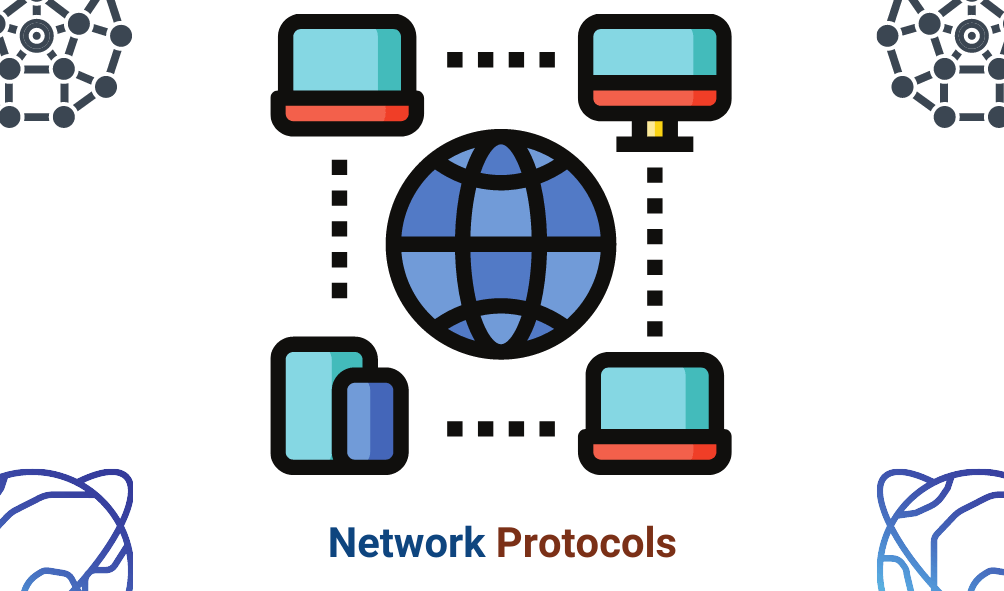
Putting access control methods in place is crucial to making sure your Memcached deployment is secure. Implement authentication features to limit access exclusively to authorised users or applications.
Setting up username/password authentication or utilising access control lists (ACLs) can achieve this. These methods help define permissions for specific IP addresses or network segments.
Consistently assess and revise access control policies to prevent unauthorised entry to sensitive data stored in Memcached.
Encryption of Data in Transit and at Rest
Ensure data security by implementing SSL/TLS encryption for secure communication between clients and Memcached servers.
Furthermore, it is important to enable data encryption at rest to safeguard cached data that is stored on the disc.
Mitigating Common Security Risks and Vulnerabilities
For optimal protection of your Memcached deployment, it is crucial to implement best practices and strictly adhere to security guidelines.
This will help mitigate potential security risks and vulnerabilities. Ensure that the Memcached server is regularly patched and updated to address any known vulnerabilities and security patches.
Executing firewalls and IDS/IPS (intrusion detection/prevention systems) is necessary to monitor and block any potentially harmful traffic targeting Memcached servers.
Regularly executing security audits and penetration testing helps to detect and address potential security vulnerabilities.
VPSserver - The Best
VPSServer's services can be effectively used with Memcached to create high-performance, scalable web applications in different locations.
Nevertheless, the particular services that VPSServer and Memcached provide would be contingent upon the precise nature of the services that are being provided as well as the unique criteria that the users are meeting.
For instance, a user might use a VPS hosted on VPSServer to run a web application that uses Memcached for caching. In this case, the VPS service directly supports the use of Memcached.
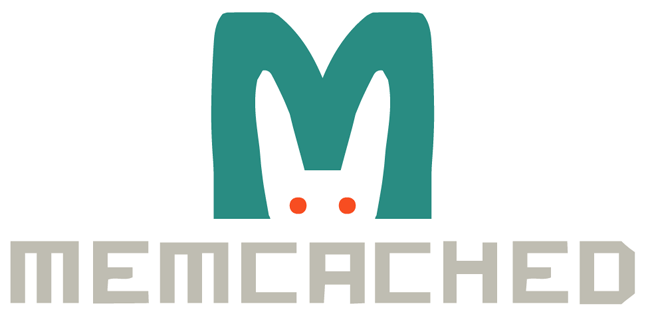
Future Trends and Emerging Technologies
In the future, people may work on making dynamic load balance and automatic failover systems even better to make systems even more resilient and reliable. The improvements made to high availability (HA) and fault tolerance (FT) over time are likely to have a big effect on how Memcached changes over time.
Incorporating distributed caching algorithms and data replication strategies can enhance resource utilisation and scalability in large-scale Memcached deployments.
Integration with Containerization and Orchestration Tools
The integration of Memcached with containerization and orchestration tools is expected to become increasingly prevalent, such as
-
Docker
-
Kubernetes
-
Apache Mesos
Containerization enables developers to package Memcached instances and their dependencies into lightweight, portable containers, facilitating easy deployment and management across containerized environments.
Orchestration tools provide automatic scaling, service discovery, and resource management capabilities, simplifying the deployment and operation of Memcached clusters in containerized infrastructures.
Predictive Analytics and AI-driven Management for Memcached Deployment
The adoption of predictive analytics and AI-driven management solutions is anticipated to revolutionize Memcached deployment and optimization. These technologies can leverage historical performance data and machine learning algorithms to predict future cache utilization patterns and demand spikes, enabling proactive capacity planning and resource allocation.
Management tools that are powered by artificial intelligence can automate allowing businesses to increase the reliability and efficiency of Memcached deployments. It automates the following while reducing manual involvement:
-
Cache configuration tuning
-
Failure prediction
-
Performance optimisation
Frequently Asked Questions
To what end must I administer the server to install Memcached?
Memcached can be installed on your server with tool managers such as apt (in Ubuntu) or yum (in CentOS). Another option is to build it from scratch and then install it. Once it has been installed, you can configure Memcached to your needs using Memcached server parameters like memory allocation and connection pool size.
For what kinds of applications may Memcached make vertical scaling easier?
By caching frequently used data in memory, Memcached makes vertical scaling of programs possible. Because of this, programs can process more requests and users at once without requiring extra hardware.
How does Memcached function, and what is the importance of using Memcache extension?
Data that is often accessed can be cached in memory using Memcached, which is a distributed memory object caching solution. Its purpose is to reduce the burden on databases. It stores data in key-value pairs and allows retrieving data rapidly for subsequent requests, reducing the need for repetitive database queries. Using the Memcache extension will enhance credibility and functionality, alleviating database load.
How many Memcached instance do I need to deploy? And what are they anyway?
The Memcached instance is a separate instance of the Memcached server that is actively running. The application demand, memory availability, and desired redundancy level are some of the parameters that determine the number of Memcached instances you should get installed Memcached. To achieve scalability and fault tolerance, it is common practice to deploy Memcached across separate Memcached servers.
Can data cached by Memcached expire?
By setting an expiration time option, Memcached can remove cached data from memory. This ensures that cached data remains fresh by automatically removing objects from memory after a predetermined period, which can be configured as an expiration time.
How exactly does Memcached store database queries?
Using a key-value pair format, Memcached stores data in memory in small chunks, making it ideal for caching API replies, web page components, and database query results.
What are some of the basic commands when using Memcached?
Storing data, retrieving data, removing data, and clearing all cached items are common operations in Memcached. One option is to apply command-line tools or Memcached client libraries to execute these tasks.
Is automatic compression of data supported by Memcached?
As a memory optimization and network overhead reduction tool, Memcached does allow for the automatic compression of data. Enabling this function in the Memcached configuration settings allows for the compression of significant values to store data in the cache.
In dynamic web applications, how does Memcached improve performance?
Memcached extension enhances efficiency in dynamic web applications by caching frequently accessed data, such as web page components and query results. Reduced load times and the need for fewer database calls result in quicker response times for users.
Do you know of any other programming languages that can utilize Memcached?
Programming languages that Memcached supports natively include Python, Java, Ruby, and Node.js. Thanks to the wide range of client libraries, integrating Memcached into applications developed in different languages is a breeze.









